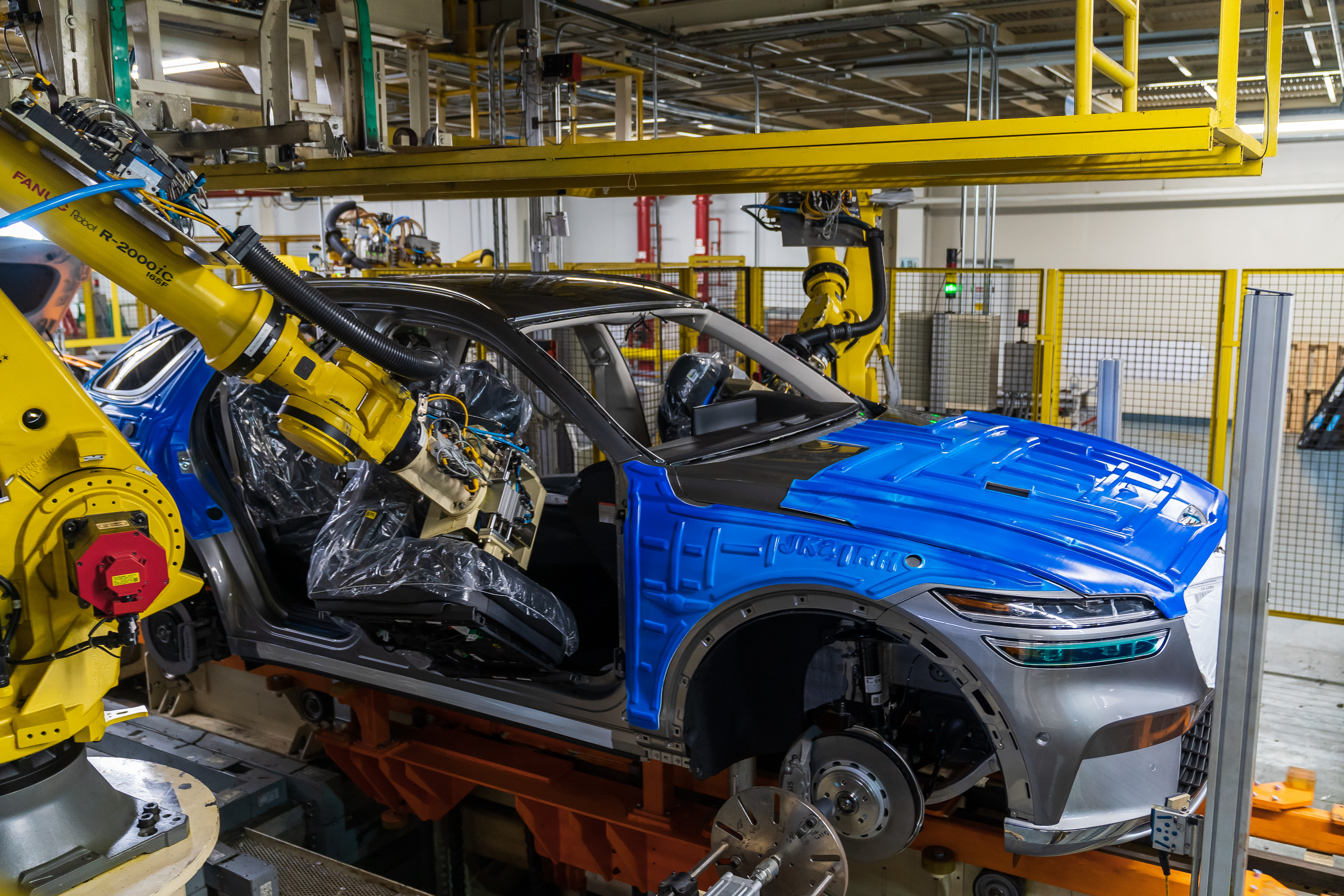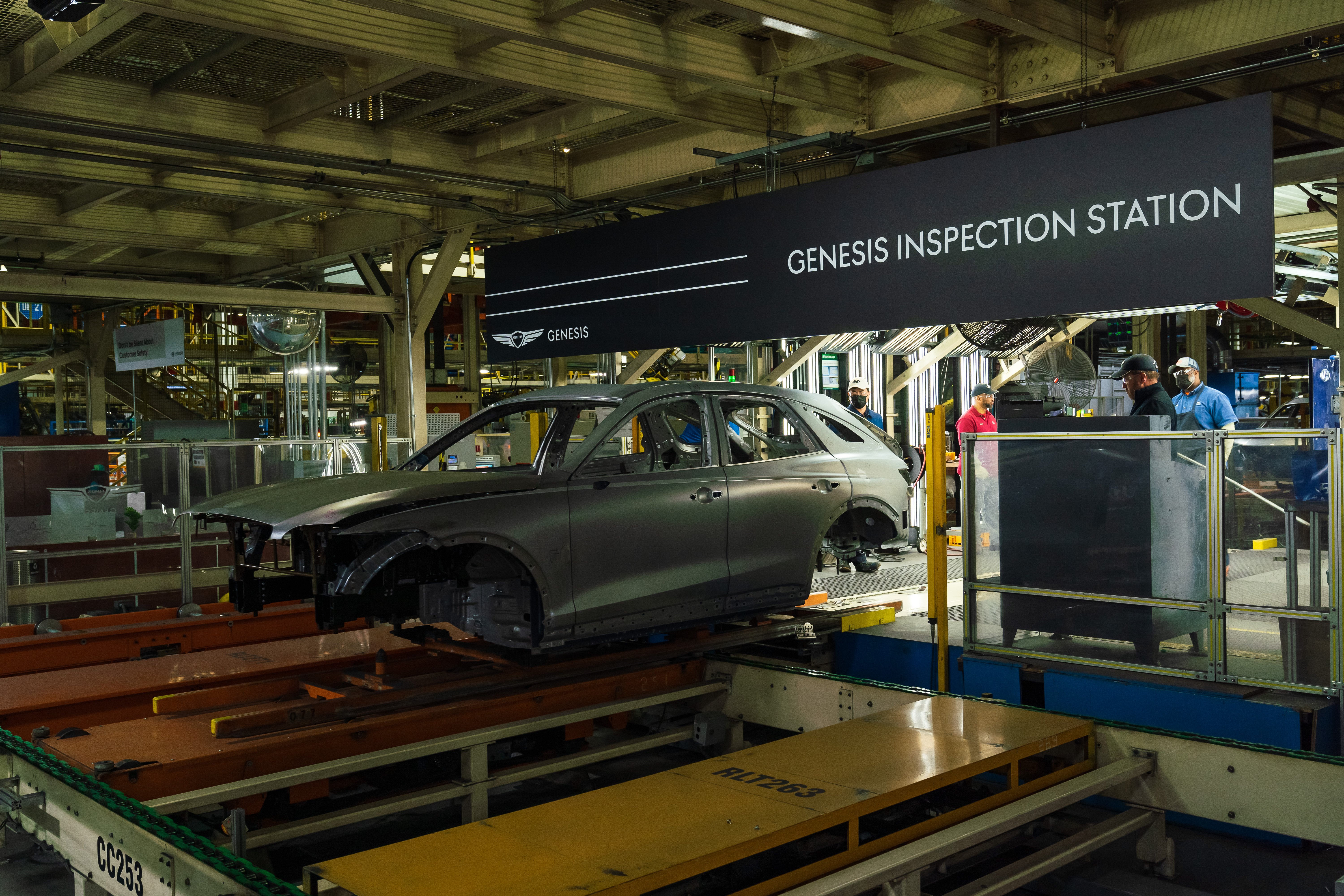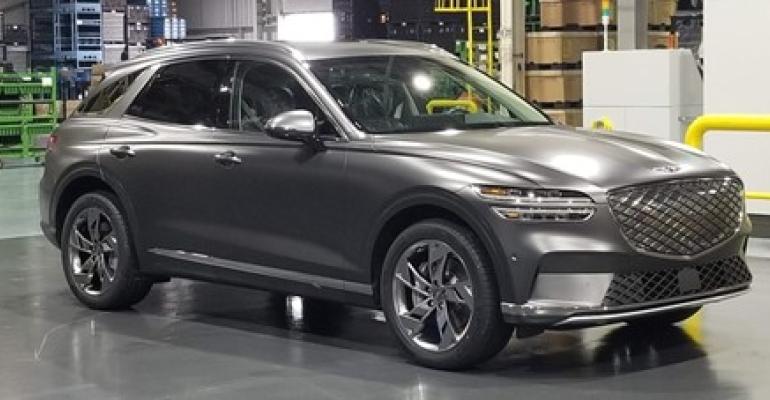Hyundai Motor Mfg. Alabama (HMMA), Hyundai’s first assembly and manufacturing plant in the U.S., has another first, as the factory begins producing the electrified version of the GV70 CUV for its Genesis luxury brand.
Until now, all-electric versions of the Genesis brand have been built in Ulsan, South Korea, at one of the world’s largest car factories. The move to the U.S., Hyundai’s second-largest market after China, underscores Hyundai’s commitment to electrification and the American market.
“It's an opportunity to manufacture in the United States, a Genesis model at a very high-quality level and begin meeting the market demand in our second-largest market in the world. It was a really easy decision,” says Tedros Mengiste, vice president of sales operations for Genesis Motor America.
But the facility just outside of Montgomery, AL, has a learning curve to climb before it can meet a sales goal of 100,000 units by 2025 while maintaining a high standard of quality.

Right now, the Electrified GV70 is being produced at relatively low volume (about 15 units per day) using only one production shift. “We're trying to basically get our team members trained, get (our) processes efficient and consistent,” says Chief Administrative Officer and Vice President Robert Burns.
Mengiste adds: “It’s so important for our very young luxury brands to ensure that the quality of the vehicle is perfect. We're not in a rush to hit any volume targets at this moment.”
It’s not just quality HMMA has to get right. As Hyundai moves toward its goal of an all-electric future by 2030, it has a balancing act common to all legacy automakers: trying to scale up what is at first a money-losing electrified-vehicle business using the proceeds from the more profitable internal-combustion-engine business while at the same time winding down ICE production.
The HMMA facility looks to bridge the gap by maintaining a flexible manufacturing line and workforce, augmented by generous amounts of automation. Bright yellow robotic arms can be seen all along the production line moving stamped-steel parts into position for welding and assembly. Around the factory floor, autonomous helper bots ferry parts and tools to different stations when human technicians need them.
The facility currently builds four different vehicles along one production line, including Hyundai’s hybrid Santa Fe. The Electrified GV70 will be the fifth product at the plant.

Cars coming down the line are differentiated by a color-coded protection pad – Electrified GV70s are bright blue. Employees at each workstation along the line have less than one minute to complete their job function before the vehicle moves to the next station.
For the hybrid Santa Fe, marrying the small battery pack to the chassis can be completed in line, that is, under the one-minute time frame of the production line. But the much larger pack for the Electrified GV70 is completed as the very last step, separate from the rest of the line.
During a media event, the HMMA team demonstrates just what it takes to install the BEV’s battery pack. A team of four technicians, aided by autonomous “skateboards” that move the cars from the main line to the offline area, installs the fully charged packs by hand. The “skateboards” then move the vehicles to a second staging area where they await road testing.
Burns says HMMA expects to produce between four to six Electrified GV70s per hour with one shift. He envisions the battery marriage process improving but remaining separate from the main production line: “I don't envision it becoming inline. But I do envision that we have an offline process. Maybe it’s a separate line, not in sequence with the other cars. That’s what I would see as a long-term solution with this battery-install process with our vehicles.”

Bringing the Electrified GV70 manufacturing to Alabama now coincides with qualifying for Inflation Reduction Act tax incentives. Currently, Mengiste says, the Electrified GV70 “qualifies for all incentives.”
Those requirements include:
- Having a battery capacity of at least 7 kWh.
- Having a gross vehicle weight rating of less than 14,000 lbs. (6,350 kg).
- Being made by a qualified manufacturer (Hyundai is one).
- Undergoing final assembly in North America.
- Having an MSRP less than $80,000 (for vans, SUVs and pickups).
Genesis also must have 40% of its battery components extracted or processed in the U.S., or in any country with which the U.S. has a free-trade agreement, or recycled in North America.
SK On currently supplies batteries for the Electrified GV70 from South Korea (with which the U.S. has an FTA), but presumably that will switch to the $5.5 billion Hyundai Motor Group Metaplant America site in Savannah, GA, where a battery factory has been announced but no partner named.
Genesis has ambitious plans in addition to the 2025 target of 100,000-unit sales. Mengiste says the automaker is committed to having every new vehicle it introduces by 2025 be electrified, and by 2030, every vehicle it produces will be a BEV.
Over the next seven years, expect a rapid pace of developments as Genesis moves to build a U.S.-based infrastructure and transition to an all-BEV company, Mengiste says.
He says much is riding on the first Genesis built outside of Korea. So, for now, the “priority is being given to the build quality and the durability of the vehicle.”





